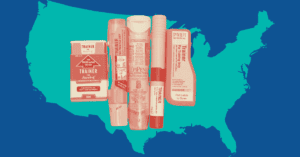When COVID-19 vaccines were first released, and even today, as we work to confront vaccine hesitancy in the US and globally, a commonly listed concern among those resistant to being vaccinated is vaccine reactions. One known vaccine reaction is anaphylaxis. Though anaphylactic reactions to vaccination are extremely rare, every vaccine administration site must be prepared to respond to anaphylaxis should it arise. This is why people are asked to stay on site for 15 minutes following vaccination. If anaphylaxis does occur, it will most likely happen in those 15 minutes. When anaphylaxis occurs under the supervision of trained healthcare providers, it can be treated quickly and effectively. However, during mass vaccination, as hundreds or thousands of people are being vaccinated at one site in a single day, it is difficult to find enough healthcare providers to both administer vaccines and monitor for reactions.
A group available and willing to fill staffing shortages at mass vaccination sites is preclinical medical students. Students in their first and second years of medical school are primarily focused on didactics or book learning. They are often called to work as post-vaccination monitors, and they must be prepared to recognize and treat anaphylaxis. However, our survey showed that medical students aren’t always given appropriate training prior to working at vaccination sites. And though epinephrine auto-injectors may seem intuitive for a future medical professional, training and hands-on practice are completely necessary for such an important role.
Enter Code Ana. Code Ana has years of expertise in training healthcare providers and laypeople to recognize and respond to anaphylaxis. Code Ana recently partnered with Tulane University School of Medicine in New Orleans, Louisiana, to create a student-run training on anaphylaxis recognition and response in the context of mass vaccination. Students received a brief lecture followed by hands-on practice with epinephrine autoinjector trainers. The training has been extremely successful, resulting in 400 new medical students prepared to supplement the mass vaccination workforce over 2 years. A study examining the efficacy of the training showed significant improvement in students’ knowledge and confidence regarding vaccines and anaphylaxis. A presentation about the training was also delivered at the Annual Conference of the Society of Student-Run Free Clinics, spurring interest in similar medical student training nationally.




